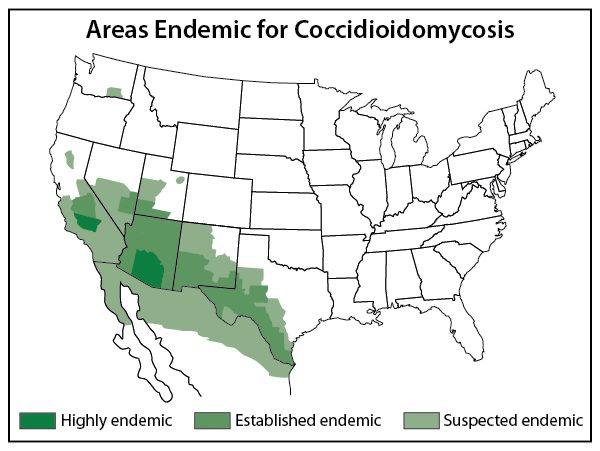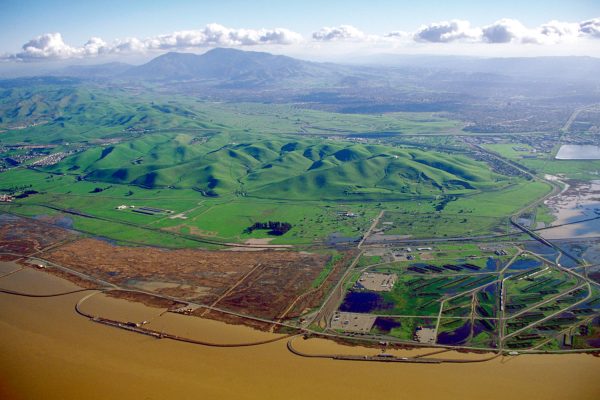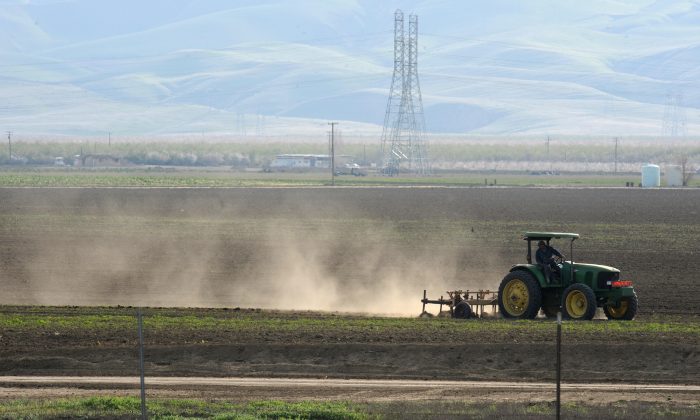"For nation shall rise against nation, and kingdom against kingdom: and there shall be famines, andpestilences STONG’S NUMBER: 3061 loimos, loy´-mos; of uncertain affinity; a plague (literally, the disease, or figuratively, a pest):—pestilence(-t)and earthquakes, in divers places." — Matthew 24:7
The vast majority of the American West is struggling with enduring “mega drought” conditions some experts think will last until 2030 and that is creating perfect conditions for an incurable disease to spread.
A microscopic fungal organism in the soil called coccidioides is becoming more mainstream due to a rise in human infections resulting from airborne spores thrown aloft by winds in the arid terrain.
Coccidioides is a naturally occurring fungus found in the soils of Arizona, California, New Mexico, Nevada, Utah, Washington state, and Texas. When dust storms kick up spores into the air, people can inhale them and develop an infection known as coccidioidomycosis.
On the street, it goes by the name Valley Fever.
“It’s amazing, being in Arizona this long, how many people still don’t know about Valley Fever,” Malisa Grantham told The Epoch Times.
Grantham is the program manager at the Valley Fever Center for Excellence in Tucson, which sits at the epicenter of most outbreaks. More people fall ill due to the fungal pathogen in Arizona than in any other state.
Once inhaled, the spores can cause flu like symptoms, including fever, cough, headache, fatigue, and muscle pain. In extreme cases, the fungus can migrate to other organs, which requires lengthy treatment. The disease is also known to have frequent relapses.

In highly endemic regions like Phoenix and Tucson, Valley Fever accounts for upwards of 30 percent of community-acquired pneumonia cases, according to the Centers for Disease Control and Prevention (CDC). However, the organization admits the figure is likely higher due to low testing.
Grantham is a born and raised rancher from Wyoming, and her husband’s family has a property close to the Arizona-Mexico border. In this arid stretch of land, exposure to airborne dust is just a way of life. Residents are accustomed to seeing dust trails from even the tiniest disturbances, like small birds.
“It’s just so dry that even the quail kick up dust,” she said.
Despite the heavy exposure factor, Grantham says she’s not aware of any ranching families taking precautions to avoid the debilitating and potentially deadly fungus hiding in the dust.
“It doesn’t enter your mind until you get it. It’s kind of like COVID,” Grantham said.
Nevertheless, penetrating the human brain, spinal column, and other organs is what the fungus does in its most extreme form: disseminated coccidioidomycosis.
Between 1-5 percent of those who contract valley fever develop the disseminated version of the disease, which typically presents within two years of exposure to the pathogen.
Overall mortality for those infected with valley fever is low, around 1 percent. Yet 40 percent of cases are severe enough to require hospitalization, according to an Arizona Department of Health Services study.
Infection from these spores isn’t a new phenomenon. Originally identified in Argentina in 1892, the name Valley Fever gained notoriety during the 1930s in the San Joaquin Valley of California when a series of outbreaks sickened agricultural workers. The central valley area of California remains a hot spot for cases to this day.

Concern over Valley Fever has garnered more-recent attention as drought conditions intensified across multiple U.S. states and cases began to spike in waves.
Reported cases in the United States increased 32 percent from 2016 to 2018, according to the CDC. The institute also estimates that at least 150,000 Valley Fever cases go undiagnosed yearly.
Health officials in Arizona noted a 23 percent increase in diagnoses in 2021 and confirmed more than 8,200 cases.
“There’s no cure for this disease. The treatments we have to inhibit the fungus, but they don’t get rid of it,” Dr. John Galgiani told The Epoch Times.
Galgiani is a professor of medicine at the University of Arizona College of Medicine and the director of the Valley Fever Center of Excellence. He explained anyone living in an endemic region is at risk of inhaling the dangerous fungal spores when there’s a lot of dust in the air.
Valley Fever’s reach goes far beyond farmers, ranchers, and people who work closely with soil. Regular city dwellers are also suffering its effects.
Much of this is from the spike in dust storms hitting populated areas, which have doubled in the past 20 years.
“Most of the data suggests that if you inhale the spores, you are at equal risk of getting infected,” Galgiani asserted.
That said, certain people run a higher risk of developing complications from Valley Fever.
“Clearly, there’s an age effect. So the older you are, the more likely you could get infected with Valley Fever here in Arizona.”
Galgiani noted that people who are immunocompromised or are taking immunosuppressive drugs also run a higher risk of developing complications. Additionally, he says the number of deaths from Valley Fever infections is likely underreported, based on a published paper from the CDC.

Mortality aside, a person who develops symptoms can suffer for months with lengthy treatments.
“The impact of this disease is not so much fatality. It’s morbidity,” Galgiani said.
“Those patients [with Valley Fever] have weeks and many months of illness. With the discussion of long COVID, a lot of the symptoms that linger from valley fever are very similar to COVID.”
Earlier this year, the National Institute of Health (NIH) awarded additional funding to multi-disciplinary research teams in Texas and California to further diagnostics, therapeutics, and a possible vaccine for the pathogen.
In February, the University of San Antonio, Texas, announced the establishment of a research center for Valley Fever with NIH funding, to the tune of $6.8 million. The following month, California’s UCLA announced a five-year, $8.4 million grant with NIH money to study immune system responses.
Developing advanced treatment options is also a priority for researchers, some of whom are using out-of-the-box technology to attack a complex infection.
“My lab weaponizes copper as a therapeutic by matching it with different metal-binding compounds to promote their effect inside of a pathogen,” Dr. Michael D.L. Johnson told The Epoch Times.
Johnson works in immunobiology at the University of Arizona Health Sciences, where he’s making strides toward new treatment options.
“We’ve killed parasites, the fungus that causes Valley Fever, and streptococcus pneumonia. We’re excited to move this therapeutic forward to [also] kill antibiotic-resistant pathogens.”
Progressive therapies are crucial since many who end up infected with Valley Fever either aren’t tested or are misdiagnosed early on.
This happened to Grantham’s father, who suffered from Valley Fever and was originally misdiagnosed with lung cancer.
“He was a longtime rancher in Wyoming and spent many winters in Arizona working in his pistachio orchard in Cochise County. He went to the doctor in Wyoming, where they told him they saw a spot on his lung and suspected lung cancer,” she explained.
“When I heard about it, I told my Dad to ask the doctors to do some research on Valley Fever, which they’d never heard of. It ended up that the lesions in his lungs were from a past case of Valley Fever.”
Grantham maintains that many people who come to Arizona as visitors could go home with Valley Fever and be left to deal with doctors who know little to nothing about the disease.
Part of that is because the fungal contagion is what Galgiani calls an “orphan disease” that doesn’t offer much to entice pharmaceutical companies.
“It’s not a money maker for a commercial investment. It really requires public support if anything is going to happen at all,” he said.




